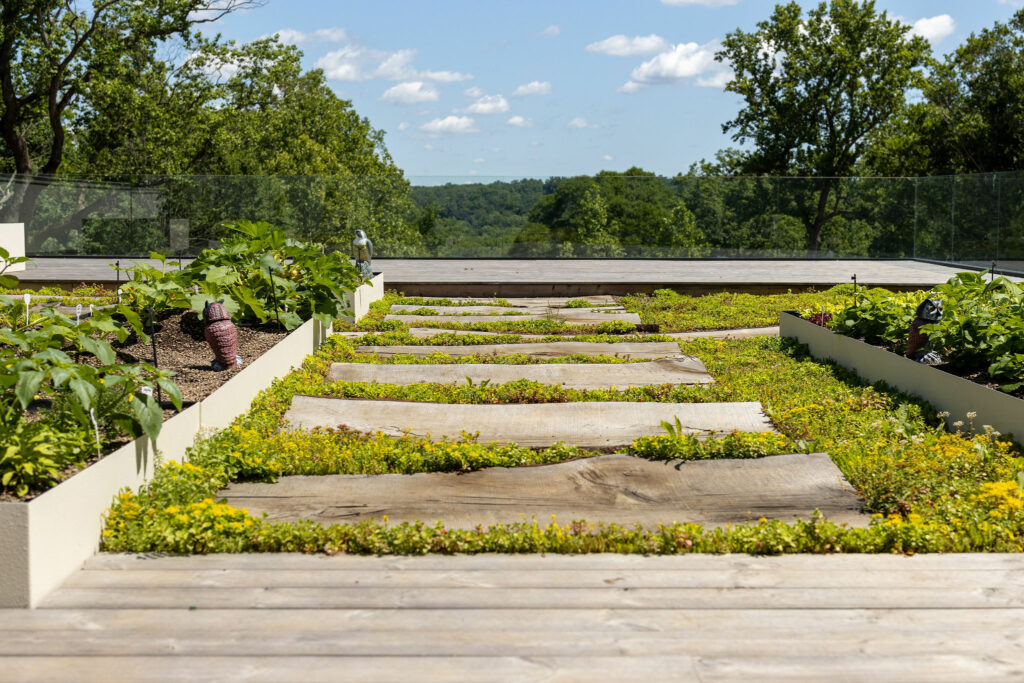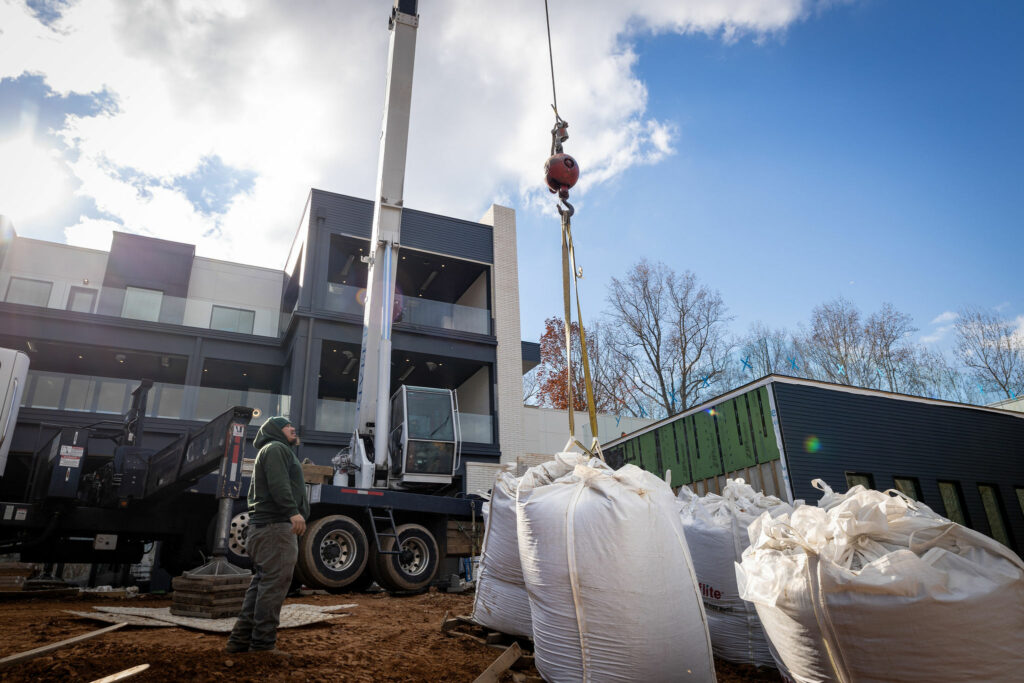In today’s eco-friendly world, sustainable landscaping is important. At LC Grounds Company, we’re passionate about integrating sustainability into every project, and we believe that using reclaimed materials and green practices is the future of landscape design.
Sustainable landscaping is a new solution that looks good and offers long-term benefits.
In this post, we will explore the benefits of sustainable landscaping, reclaimed materials, and eco-friendly practices that can change your outdoor space into an environmental masterpiece.



The Benefits of Sustainable Landscaping
Sustainable landscaping offers a multitude of benefits that go beyond simply creating a pretty garden:
- Environmental Impact: By repurposing materials and choosing eco-friendly options, you help reduce waste and conserve natural resources. Sustainable practices lower your landscape’s carbon footprint, contributing to a healthier ecosystem.
- Economic Advantages: Reclaimed materials often come at a lower cost than brand-new alternatives. Sustainable practices can lower maintenance costs over time. They can also boost your property’s value by attracting modern, eco-friendly buyers.
- Unique Aesthetic & Functional Appeal: Reclaimed materials bring unique textures, colors, and a sense of history to your outdoor space. Each element tells a story, adding character that new materials simply can’t replicate. When combined with eco-friendly design, your landscape becomes a reflection of both beauty and responsibility.
Exploring Reclaimed Materials
One of the most compelling aspects of sustainable landscaping is the use of reclaimed materials. These elements not only reduce waste but also add a distinctive charm to your property.
- Recycled Stone & Brick: Imagine a pathway or patio constructed from reclaimed stone or brick. These materials offer a weathered, natural look that creates a striking focal point in your design. Their durability and unique appearance provide both functionality and visual interest.
- Repurposed Wood: Reclaimed wood is a versatile material used for everything from decks and garden furniture to decorative accents. The natural look and feel of repurposed wood create a warm and inviting space. It is also a good choice for the environment.
- Other Materials: Don’t overlook reclaimed metal or glass elements that can be incorporated for artistic touches. Whether it’s a modern metal sculpture or decorative glass accents, these materials add an innovative twist to your landscape’s eco-friendly narrative.
When sourcing reclaimed materials, it’s important to work with reputable suppliers who ensure both quality and sustainability. The right materials, chosen with care, can set the stage for a landscape that’s as resilient as it is full of character.
Eco-Friendly Practices in Landscaping
Selecting sustainable materials is only one part of the equation. Implementing eco-friendly practices throughout your landscape design ensures that your outdoor space remains environmentally responsible over the long term.
- Native & Drought-Tolerant Plants: Choosing plants that are native to Northern Virginia not only supports local biodiversity but also requires less water and care. Drought-tolerant species thrive with minimal intervention, making them a smart choice for sustainable gardening.
- Water Conservation Techniques: Incorporate smart irrigation systems—such as sensor-based watering and automated schedules—to ensure your plants get just the right amount of water. Creating rain gardens and using permeable surfaces can help manage stormwater. This reduces runoff and saves this valuable resource.
- Organic Soil Management & Mulching: Use organic compost and sustainable mulching options to maintain soil health without resorting to chemical fertilizers. These practices promote a rich, healthy soil ecosystem that benefits both your garden and the local environment.
- Energy-Efficient Lighting: For outdoor spaces that extend their beauty into the night, consider energy-efficient lighting options like LEDs or solar-powered fixtures. These choices not only create a warm ambiance but also minimize energy consumption.
Integrating Sustainability into Your Landscape Design
Creating a sustainable landscape involves thoughtful planning and a harmonious blend of reclaimed materials and eco-friendly practices. Here are some tips to seamlessly integrate sustainability into your design:
- Balance Hardscape and Softscape: Blend reclaimed materials—like recycled stone pathways or repurposed wood features—with lush, native plantings. This balance creates a natural flow that is both visually appealing and environmentally responsible.
- Create Focal Points with a Story: Use reclaimed elements as focal points that tell a story of sustainability. Whether it’s an artistic metal installation or a weathered wooden bench, these pieces can serve as conversation starters and visual anchors in your design.
- Plan for the Future: Sustainable landscaping isn’t just about the initial installation—it’s about long-term maintenance and adaptability. Work with professionals who can help design a landscape that evolves gracefully over time while remaining true to eco-friendly principles.
Conclusion & Call to Action
Sustainable landscaping is a transformative approach that marries aesthetic beauty with environmental stewardship by using reclaimed materials and eco-friendly methods. This will help you create a beautiful outdoor space while also showcasing responsibility and durability.
At LC Grounds Company, we’re committed to helping you bring your sustainable vision to life. If you’re ready to transform your outdoor space into an eco-friendly oasis, 📞 Call us today at 571-470-6083 to schedule your consultation. Let’s work together to build a landscape that reflects your values and stands the test of time.
